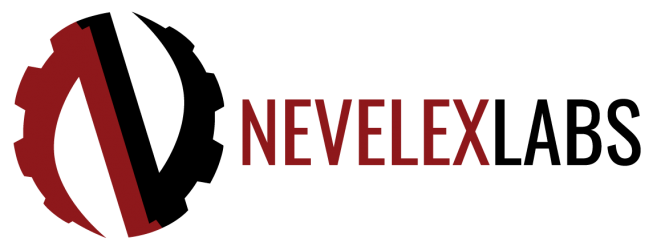
The Syndication Feed (RSS / Atom) widget allows for the display of a syndication feed on a dashboard.

The Notification Templates tab within the Categories, Analyzers, Templates, Incident & Timeline Configuration Screen allows for the management of email templates used by the NL-Email-Template node.

The Inject JSON widget allows a user to inject a JSON message into an inject node configured with a JSON payload option.

The Node widget allows for the display of user-defined markdown information on a dashboard.

This report totals the number of times a message traverses a set of flow nodes based on the selected filter criteria.

The Editing Application Settings Screen is used to edit the administrative settings for Security Flow. The settings are divided into tabs for system settings, authentication settings, notification service settings, security settings, logging settings, and artifact settings.

The Data Renderers tab within the Categories, Analyzers, Incident & Timeline Configuration Screen allows for the management of Data Renderers that are used to transform a JSON messages in a user-friendly format.

The Restricted Fields tab within the Categories, Analyzers, Incident & Timeline Configuration Screen allows for the management of JSON data which is restricted from being viewed within an Incident Timeline.

The Message Analyzers tab within the Categories, Analyzers, Incident & Timeline Configuration Screen allows for the management of analyzers to configure the runtime behavior of the NL-Message-Analysis node.

The Incident Categories tab within the Categories, Analyzers, Incident & Timeline Configuration Screen allows for the management of categories, which are labels assignable to Incidents.

Returns metadata about the deployed flows.

This report generates cost savings totals grouped by time intervals over a specified duration. The cost savings information included in the report is limited to those created within the specified duration.

Returns meta data about the installed plugins.

This report generates incident totals grouped by status over a specified duration. The incidents included in the report are limited to those created within the specified duration.

This report generates incident totals grouped by current status over a specified duration. The incidents included in the report are limited to those created within the specified duration.

This report generates incident totals grouped by current status and time intervals over a specified duration. The incidents included in the report are limited to those created within the specified duration.

This report generates incident totals grouped by status and time intervals over a specified duration. The report’s starting totals include all incidents matching the search criteria, regardless of when the incidents were created.

Generates a report containing the average time from when an incident is created until it is closed.

Report generates cumulative cost savings totals grouped by time intervals over a specified duration.

Report generates cumulative totals about time savings and cost savings grouped by time intervals over a specified duration.

This report generates cumulative time savings totals grouped by time intervals over a specified duration.

Report generates totals about time savings grouped by time intervals over a specified duration.

This report generates summary cost savings totals based on the selected filter criteria.

This report generates summary time savings totals based on the selected filter criteria.

This report generates category totals grouped by current status over a specified duration.

The Authorization Service (Create/Edit OAuth2 Configuration) screens are used to create a new authorization service or update an existing authorization service.

The Authorization Services (OAuth2 Configurations) screen displays the current configured services for use.

Learn how to handle potential errors in a flow by using the catch node within a flow.
The Categories, Analyzers, Templates, Incident & Timeline Configuration Screen is used to manage Incident Categories, Message Analyzers, Data Renderers, Notification Templates, and Restricted Access Fields.
The Incident Timeline Screen displays a detailed view of a specific incident.
Set of training videos to get your Security Flow system up and running quickly.
The Application (OAuth2) Authorization Token screen is used to create a new authorization token or update an existing authorization token name.
The Authorizations (OAuth2) screen provides a view of all the OAuth2 authorizations currently configured within Security Flow.
The Incidents screen provides a paged view of incidents and the ability to perform batch actions on incidents.
The Inject CSV (Comma Separated Values) widget allows a user to inject a CSV string into a csv node.
The Inject IoC (Indicator of Compromise) widget allows a user to inject an IoC, such as a domain, IP, or URL, into a NL-Find-IoCs node.
The Indicators of Compromise report displays a filterable, sortable list of indicators of compromise, IoCs.
The Incidents List report displays a filterable list of Incidents.
This page displays the Plugin Instance’s Configuration Information, which varies depending on the type of instance being configured.
The User’s Guide Table of Contents for Nevelex Labs Security Flow .
The Download New Certificates screen provides a form used to download DXL client certificates from an ePO instance to connect to a DXL fabric.
Overview of the dashboard screen with training videos on how to use the screen and descriptions of the various widgets.
Learn how to use the Security Flows screen to create, edit, and deploy flows. This page also explains how to export flows, import flows, and restart the entire flow engine.
The Certificates Screen displays the certificates installed on the system for connecting to communication fabrics, such as DXL or OpenDXL.
Application Settings screen is used to manage Security Flow’s configuration. This includes options such as the mail server to use for outbound message, the LDAP server to use for authentication, the system’s web server certificates, etc…
This page displays all of the permission group entries for each category that is settable.
The Create/Edit Fabric Instances Screen is used to create or edit a fabric instance, which defines a connection to an existing communication fabric.
When the system has been configured to use a LDAP server for user authentication, users can not be created. However, user roles can be managed.
The Audit Logs page displays access to view the audit log.
The Roles page lists all the roles defined and provides ways to view the details of a role, edit a role, create a new role, or delete a role.
The manage Users screen contains a layout showing each user in a row with seven columns of information.
The Fabric Instances screen lists all of the fabric instances in the system.
The plugins screen allows for the updating of existing plugins or the upload of new plugins via the Add Plugins tile.

A role defines a set of permission options which are assignable to users.
The Instances screen allows users to view and manage plugin instances. A plugin instance defines the configuration needed to connect to a third-party production integration and includes information such as login credentials or hostnames.
The Manage Data Screen allows a user with proper privileges to prune the database, export a snapshot of the database, restore a database snapshot, and send logs to Nevelex Labs for offline analysis.
Metro Office Park
2950 Metro Drive, Suite 104
Bloomington, MN 55425
Phone: +1 952-500-8921
©Nevelex Labs, LLC. 2018-2024, All Rights Reserved.
EULA